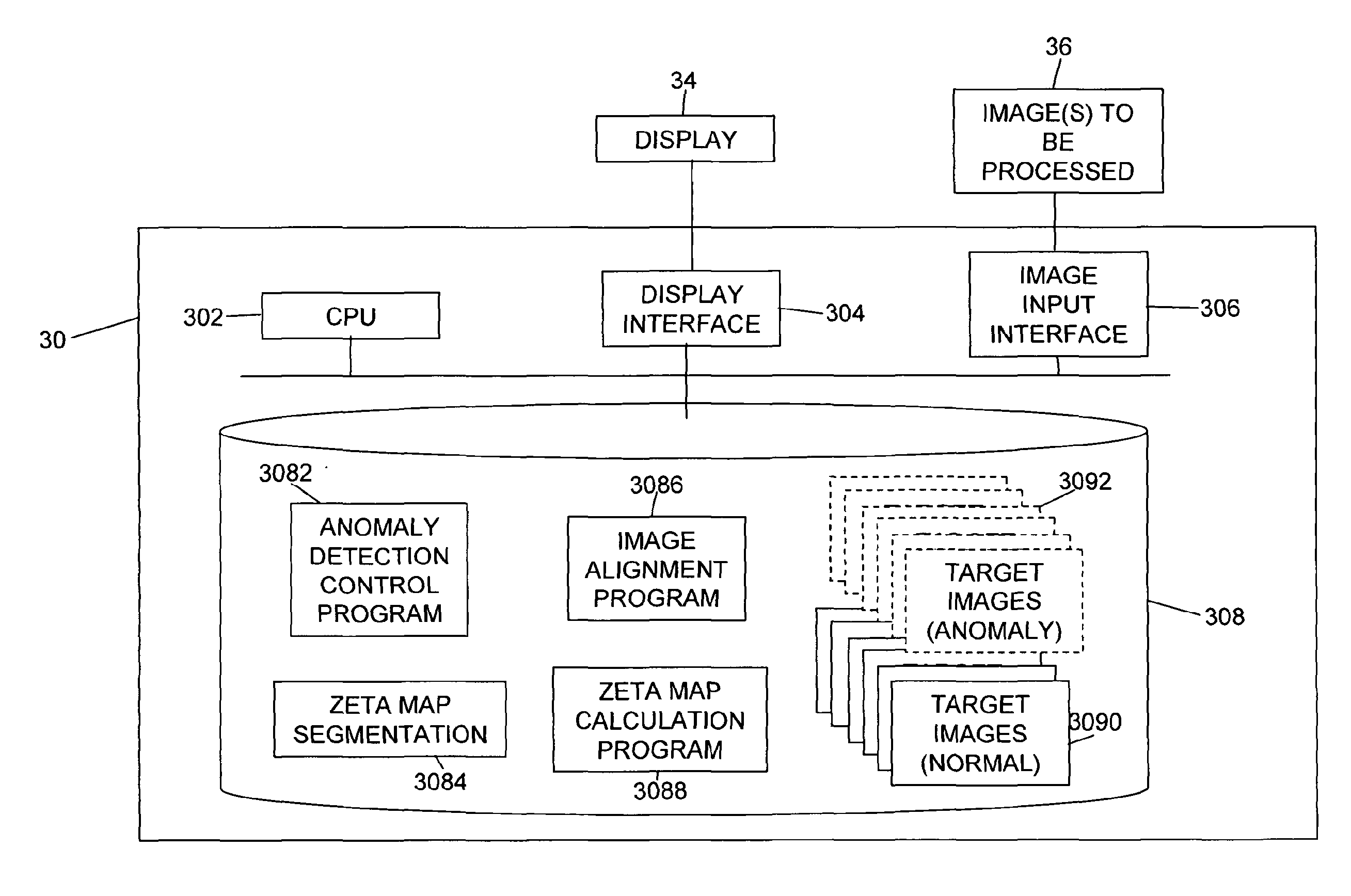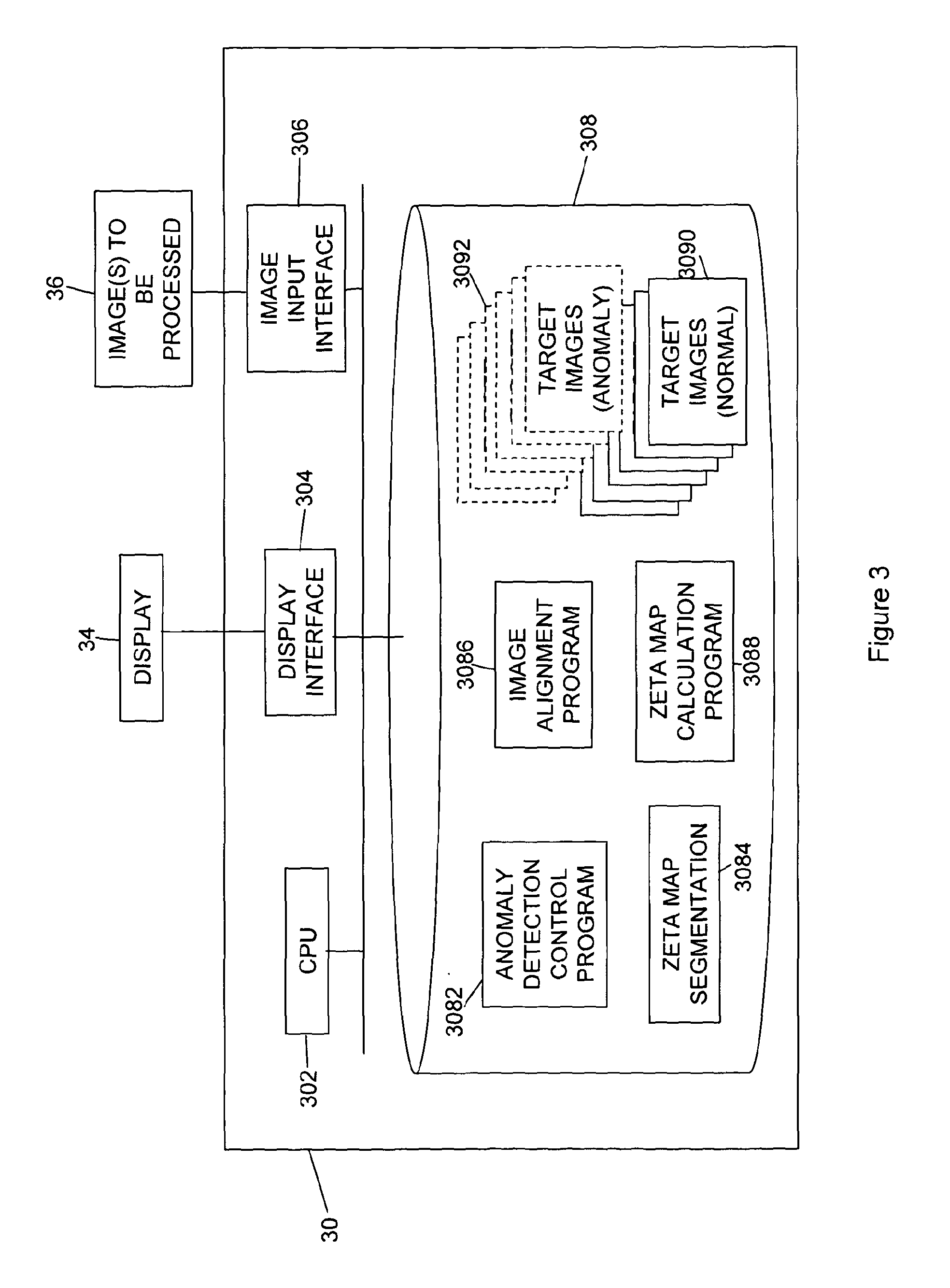Method and system for anomaly detection in data sets
a data set and anomaly detection technology, applied in the field of image data, can solve the problem of difficult to find the satisfaction of anomaly criterion, and achieve the effect of improving optimisation
- Summary
- Abstract
- Description
- Claims
- Application Information
AI Technical Summary
Benefits of technology
Problems solved by technology
Method used
Image
Examples
first embodiment
Anomaly Segmentation in Image Data
[0069]A first, general, embodiment of the invention applicable to segmentation of anomalies in image data is shown in FIGS. 3 to 7, and described next.
[0070]FIG. 3 is a block diagram of an apparatus 30 for performing automated anomaly detection in image data according to a first embodiment. The apparatus 30 may, for example, be a general purpose computer provided with an appropriate input interface 306 so as to be able to accept image data 36, appropriate control software that controls a CPU 302 to process the data to perform anomaly detection, and a display interface 304 arranged to control a display screen 34 so as to be able to display the processed image data on the screen. In order to control the operation of the CPU 302 control software is provided stored on computer readable storage media 308, such as a hard disk drive or the like. The control software takes the form of anomaly detection control program 3082, zeta map segmentation program 308...
second embodiment
Conclusions
[0116]In the first and second embodiments we have described a method for the automated unsupervised anomaly detection of high-dimensional data with an example application in the second embodiment to MRI. Evaluation of its fidelity against manual segmentation in the context of DWI has shown excellent performance across a range of subjects and lesion parameters.
[0117]Within the embodiments a set of “standard” cases is required whose minimal size depends on the nature of the anomaly. For the brain imaging application we have examined (the second embodiment), the variability of the lesion contrast-to-noise ratio is important; here we have shown that excellent results may be obtained with DWI using a modest set of 65 images. Given that DWI is quite markedly prone to high signal artefacts that affect only a small proportion of images, this value should not be an underestimate. In any case, this is not a serious limitation given the ease of collecting normal cases.
[0118]In addit...
PUM
 Login to View More
Login to View More Abstract
Description
Claims
Application Information
 Login to View More
Login to View More - R&D
- Intellectual Property
- Life Sciences
- Materials
- Tech Scout
- Unparalleled Data Quality
- Higher Quality Content
- 60% Fewer Hallucinations
Browse by: Latest US Patents, China's latest patents, Technical Efficacy Thesaurus, Application Domain, Technology Topic, Popular Technical Reports.
© 2025 PatSnap. All rights reserved.Legal|Privacy policy|Modern Slavery Act Transparency Statement|Sitemap|About US| Contact US: help@patsnap.com



